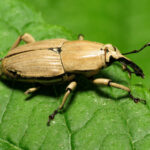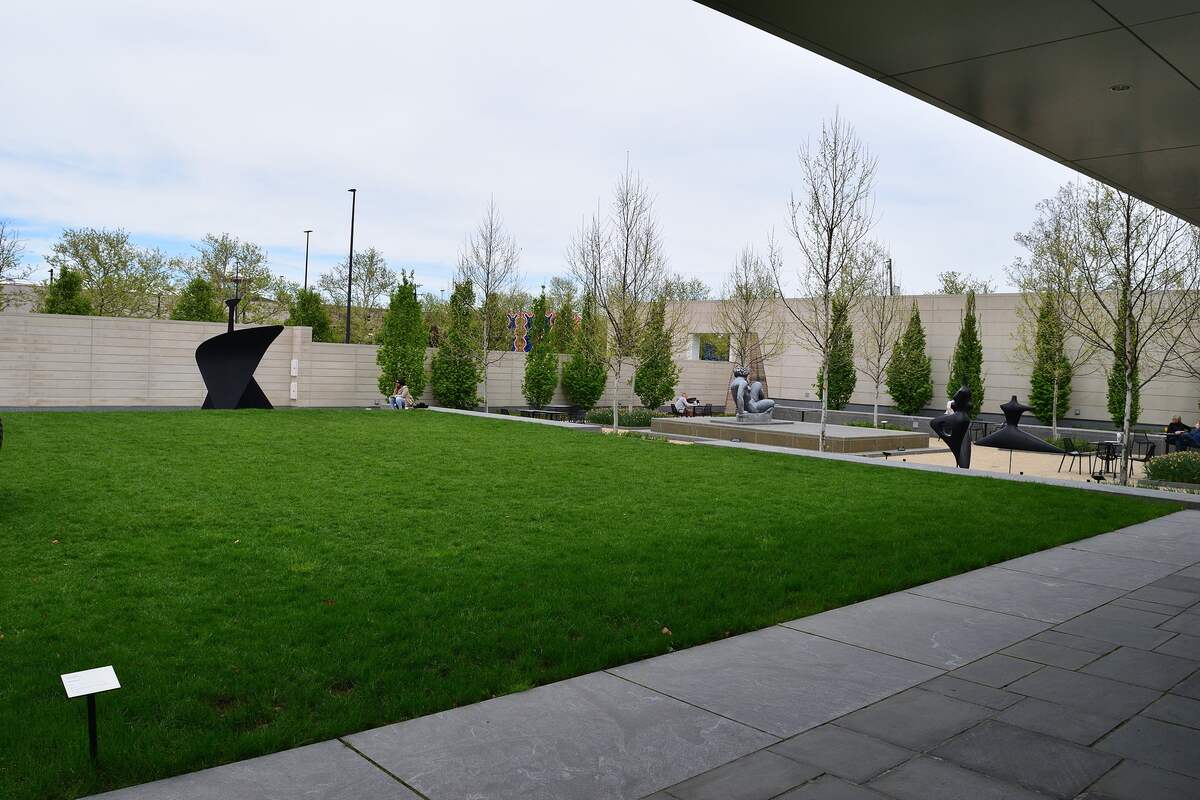
Staying on top of lawn work takes a special kind of know-how, but it doesn’t have to be difficult. Perfectly-manicured, emerald green lawns with straight-as-an-arrow stripes? That’s what folks strive for, but Ohio’s unpredictable weather can make it a challenge. If you’re just starting out with your lawn or are new to the area, choosing the best grass seed for Ohio is your first step.
Here’s a breakdown of the best grass seed varieties to help your Ohio lawn go from forgettable to unforgettable.
Kentucky Bluegrass

Photo Credit: Shutterstock
The Buckeye State just wouldn’t be complete without the iconic Kentucky bluegrass, the most popular grass seed in Ohio. Not only is it lovely to look at with its vibrant emerald green, but it’s also very hardy, withstanding winter and disease better than most grass varieties. It grows quickly, making it the ideal pick for those who don’t have time to wait for a lawn to grow out.
And it also works well to repair damaged or bare spots. It does, however, need more consistent mowing and fertilizing than other grass varieties. To get the best look, mow it down to between 2.5 – 3.5 inches, and don’t wait too long to fertilize or to pull weeds. You’ll need a soil pH between 6 and 7.5, and it should be sown on well-drained and heavily fertilized soil for optimum performance.
General Characteristics:
- Classification: Cool-season grass
- Spreads by: Rhizomes
- Shade tolerance: Low
- Drought tolerance: Moderate
- Foot traffic tolerance: Moderate
- Maintenance needs: Moderate mowing frequency and high fertilization needs.
- Mowing height: Set mowing height between 2.5 and 3.5 inches.
- Potential for disease: Moderate to high; prone to several diseases, such as dollar spot, leaf spot, necrotic ring spot, summer patch, and stripe smut.
- Soil pH: 6-7.5
Grass Seed Options:
– Jonathan Green (11970) Blue Panther Kentucky Bluegrass Grass Seed (3 lbs.)
– SeedRanch Midnight Kentucky Bluegrass Seed (5 lbs.)
Fine Fescues
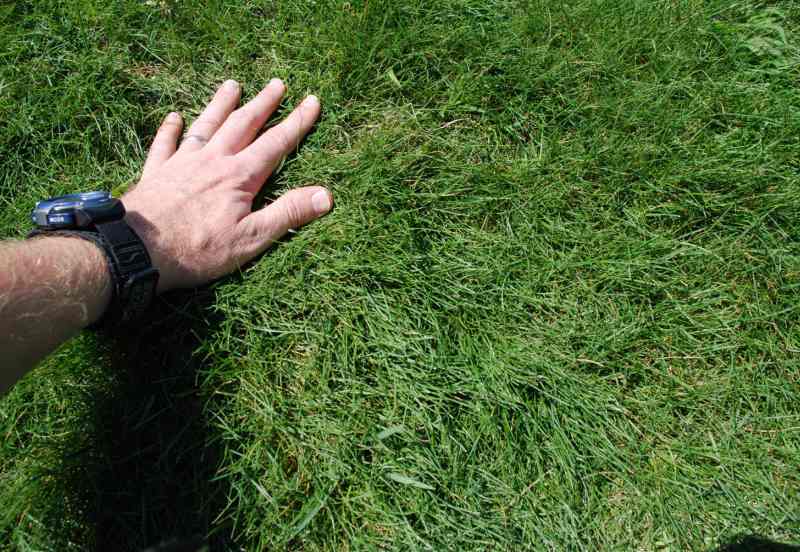
Aaron J. Patton, Ph.D. / Turfgrass Extension Specialist at Purdue University
Don’t let their delicate name fool you – fine fescues are able to withstand Ohio’s brutal winters (with the right winter lawn care), even harsh conditions including drought, shade, and disease. Not to mention they’re super easy and quick to seed. Fine fescue is a short, reddish-tinged grass that’s perfect for shady areas, and it’s known to be one of the best turfgrass types around.
Keep it on the shorter end when it comes to mowing for a high-quality look: 3 to 3 1/2 inches is ideal. You don’t need to fertilize this grass often, and it does well on most soil types. When taking care of fine fescues, a soil pH between 6 and 6.5 is just the ticket.
Pro tips: When you head to the store to pick up your grass seed, listen to the experts. Consider pre-mixes and blends that contain the perfect combination of grass seed varieties, such as a mix of Kentucky bluegrass and fine fescue. And even though fine fescue usually does well in cold weather, you should still know how to prepare your lawn for winter in Ohio to give it the best chance of not only surviving but thriving come spring.
General Characteristics:
- Classification: Cool-season grass
- Spreads by: Creeping red fescue spreads by rhizomes, while other fine fescues are bunch-type grasses, such as Chewings, hard, and sheep fescues.
- Shade tolerance: Moderate to High
- Drought tolerance: Moderate to High
- Foot traffic tolerance: Low to Moderate
- Maintenance needs: Low fertilizer and mowing needs
- Mowing height: Set mowing height between 2.5 and 4 inches, depending on species.
- Potential for disease: Moderate. Common diseases include red thread, leaf spot, dollar spot, summer patch, and powdery mildew.
- Soil pH: 6-6.5
Grass Seed Options:
– Outsidepride Legacy Fine Fescue Grass Seed (5 lbs.)
– Eretz Creeping Red Fine Fescue Seed (choose your size)
– Outsidepride Creeping Red Fine Fescue Grass Seed (25 lbs.)
– Outsidepride Hard Fine Fescue Grass Seed (10 lbs.)
Perennial Ryegrass
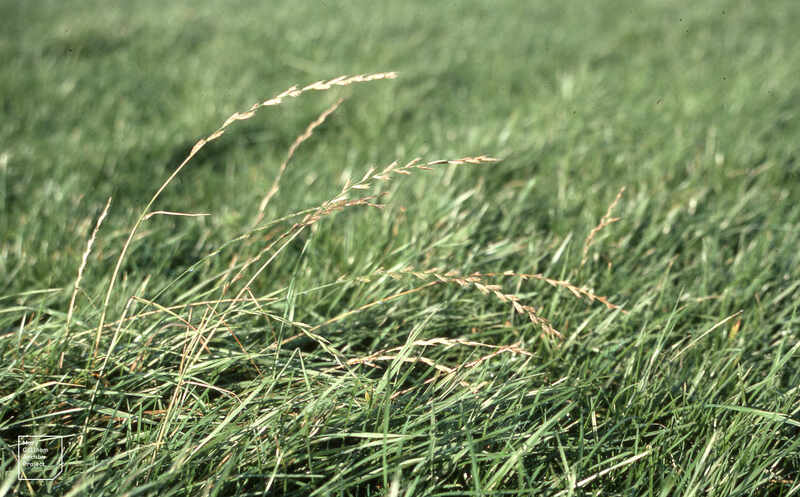
Photo Credit: Dr Mary Gillham Archive Project / Flickr / CC BY 2.0
Perennial ryegrass is jostling its way into the hearts of Ohioans as a great choice for their lawns. Just like Kentucky bluegrass, this popular species is known for its fast-growing ability. It doesn’t take too long for ryegrass to reach maturity.
But on the other hand, it’s not quite as winter hardy. If you’re growing perennial ryegrass, the lawn mowing rule of thumb is to keep it about 2 ½ to 3 inches high.
Pro Tips:
- Cut it down at least once every week during peak season.
- It doesn’t need too much pampering but expects moderate upkeep when it comes to mowing and fertilizing.
The soil needs for perennial ryegrass are really accommodating. It can happily grow in soils between 5 and 8 pH, but the ideal range is between 6 and 7. On top of it all, poor-draining soils or those with low fertility won’t be a problem, either.
Unfortunately, due to its cool-season nature and robust growth, perennial ryegrass is at a higher risk for certain diseases such as:
- Gray leaf spot
- Red thread
- Leaf spot/melting-out
Be sure to look out for any of these symptoms and treat them early on.
General Characteristics:
- Classification: Cool-season grass
- Spreads by: Has a bunch-type growth habit
- Shade tolerance: Low
- Drought tolerance: Low
- Foot traffic tolerance: High
- Maintenance needs: Moderate mowing and fertilization requirements. Thatch is not significant.
- Mowing height: Set mowing height to 1.5 to 2.5 inches
- Potential for disease: High. Common diseases include gray leaf spot, red thread, and leaf spot/melting-out.
- Soil pH: Can grow in soils with a pH between 5 and 8, but prefers between 6 and 7.
Grass Seed Options:
– Outsidepride Perennial Ryegrass Seed (5 lbs.)
– Eretz ProTurf Perennial Ryegrass Fine Lawn Seed (choose your size)
Tall Fescue

Aaron J. Patton, Ph.D. / Turfgrass Extension Specialist at Purdue University
No matter how hot and dry it gets, tall fescue can definitely keep its cool in Ohio! This heat-resistant grass champion features a broad blade with leaves up to ¼ inch wide and a green color that will stay lush even on scorching days. It can surely take the heat and even handle a long period without water. It’s true, tall fescue loves the sunshine!
Tall fescue’s tough characteristics, combined with its low maintenance needs, make it ideal for keeping your lawn in shape without having to break a sweat. All parts of Ohio love this grass seed that spreads through short rhizomes and doesn’t create much thatch. It can even handle a fair amount of foot traffic.
To really get the most out of your tall fescue, set the mowing height at two inches for every three inches in length and make sure you are watering it enough – but not too much.
Pro tip: If you buy tall fescue grass seed, go for a mixture of fescue and annual rye, as the rye helps protect the seedlings. Since the ryegrass is annual, it will die out after winter and won’t come back.
General Characteristics:
- Classification: Cool-season grass
- Spreads by: Produces short rhizomes but has a bunch-type growth habit
- Shade tolerance: Moderate
- Drought tolerance: Moderate to High
- Foot traffic tolerance: Moderate
- Maintenance needs: Frequent mowing. Does not produce significant thatch.
- Mowing height: Set mowing height to 2 inches when the grass reaches 3 inches tall.
- Potential for disease: Tolerant of most diseases when properly maintained.
- Soil pH: 5.5-6.5
- Soil type: Adapted to a wide range of soil conditions, but prefers fertile clay soils with good drainage.
Grass Seed Options:
– Triple-Play Tall Fescue Grass Seed Blend (5000 sq ft)
– Eretz Kentucky 31 K31 Tall Fescue Grass Seed (choose your size)
– Pennington The Rebels Tall Fescue Grass Seed Mix (7 lb.)
Bentgrass
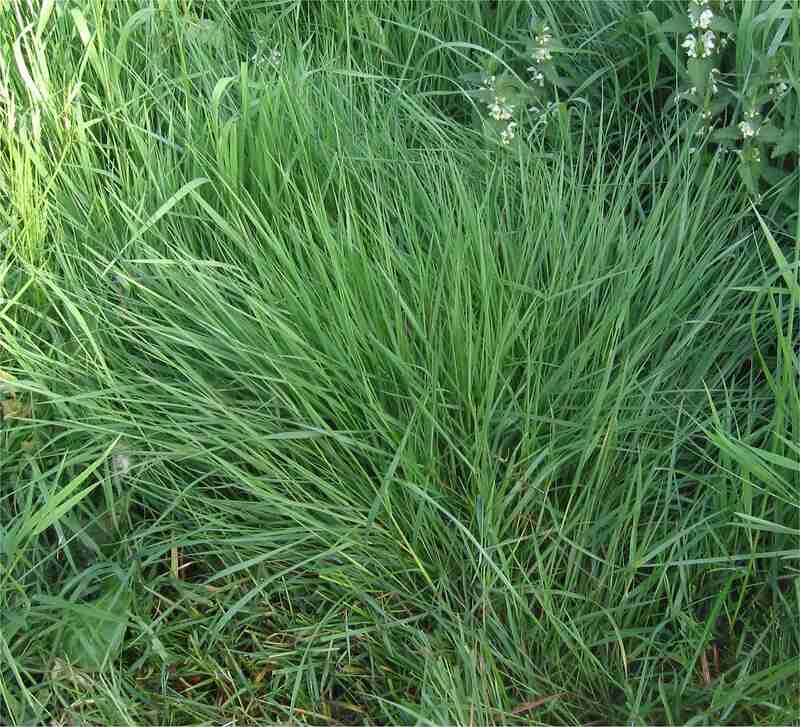
Some folks say that bentgrass is the devil’s grass. It tends to take over and be hard to get rid of. But one can’t deny that it offers a great playing surface for golfers in Ohio when it’s managed properly. Yes, it’s high maintenance. But if you’re looking for a grass type that offers a superior quality of turf, bentgrass is the way to go.
It requires frequent fertilizing, mowing (keep it at 1/2 inch), and watering, and it’s susceptible to common diseases like dollar spot and brown patch. If those requirements seem too daunting for you, look into Penncross creeping, a Bentgrass sub-type that is a bit easier to take care of.
While it still needs regular maintenance, it’s slightly less demanding than other varieties. However, remember that this type of grass isn’t recommended for average homes due to its high maintenance needs.
General Characteristics:
- Classification: Cool-season grass
- Spreads by: Stolons
- Shade tolerance: Moderate
- Drought tolerance: Low
- Foot traffic tolerance: Moderate
- Maintenance needs: Requires frequent watering, fertilizing, dethatching, and mowing.
- Mowing height: Set the mowing height between 0.125 and 0.5 inches.
- Potential for disease: High disease potential. Common infections include dollar spot and brown patch.
- Soil pH: 5.5-6.5
- Soil type: Prefers moist soils with good drainage.
Buffalograss
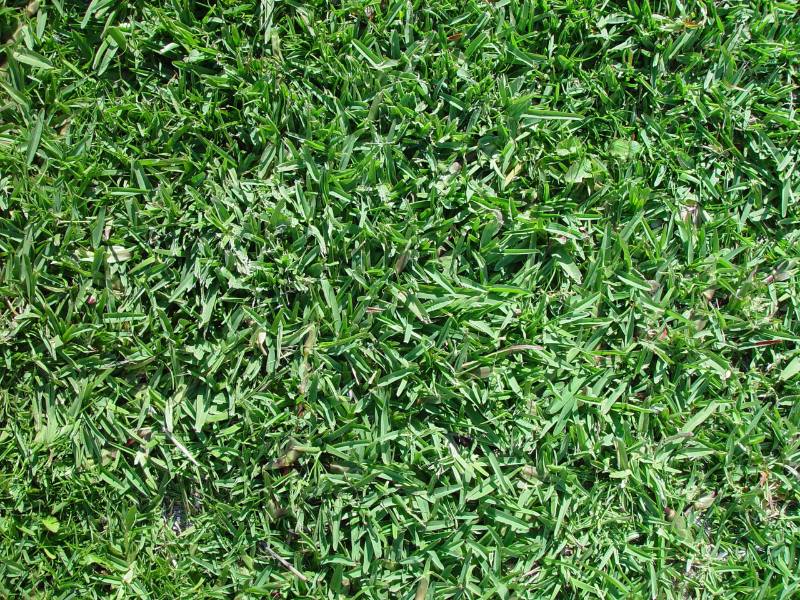
Photo Credit: Pixnio
With buffalograss, you can give your yard a striking look with its soft, velvety, green-blue leaves. Of all the warm-season grasses out there, buffalograss is one of the easiest to maintain and adapts best to the Ohio climate. As an added bonus, you’ll hardly ever need to give it water or fertilize it.
However, there is more to growing buffalograss than just reducing water bills. Like any other grass type, buffalograss needs a bit of maintenance. The lawn mowing height should be set at 2–3 inches, and you should mow it a couple of times per week during peak growing season. On the downside, it tends to be a bit messier-looking than other grasses and doesn’t do well in sandy soils.
Moreover, it is not the most resilient when it comes to foot traffic, and it can lose its signature green color in the winter. Buffalograss can be a great choice for Ohio homeowners with a tiny piece of land.
Classification: Warm-season grass
Spreads by: Stolons
Shade tolerance: Low
Drought tolerance: High
Foot traffic tolerance: Low
Maintenance needs: Low fertilizer and mowing needs. Requires weed control.
Mowing height: Set the mowing height between 2 and 3 inches.
Potential for disease: Good tolerance against diseases and common Ohio lawn pests
Soil pH: 6.5-7.5
Soil type: Native clay soils, not sandy soils
Grass Seed Options:
– Everwilde Farms Buffalograss Seeds (1 lb. of seeds)
– Buffalograss seed (primed) (5-lb. bag)
How to Choose the Right Grass and Take Care of It
The first thing to consider before seeding any grass type is Ohio’s soil and climate. The state experiences warm days and cool nights, creating an ideal growing climate for cool-season grasses like fescues, Kentucky bluegrass, and ryegrass.
However, lawns in sunnier parts of Ohio can benefit from warm-season varieties like buffalograss in order to stay green during the hot summer months. Remember that warm-season grasses are more challenging to grow and maintain, so it’s best to stick with cool-season grasses if you’re a lawn care newbie.
Soils in Ohio are usually loamy with a mix of silt, sand, and clay. Depending on where in the state you live, the soil can be acidic or alkaline, so be sure to test the pH level before planting.
Pro tip: When it comes to choosing the right grass type for your Ohio lawn, it’s all about balancing your needs with the right combination to create the perfectly-manicured lawn you want. Ideally, you’ll want to find a mix that contains Kentucky bluegrass and fine fescue to take advantage of their tolerance to shade and drought.
Seeding and Lawn Care
Once you’ve determined the right grass type for your Ohio lawn, the seeding and maintenance are the fun parts. Just remember, grass seed won’t do you any good unless you correctly seed and maintain your lawn.
First, early fall is the best time to seed a new lawn in Ohio. The warm days and cool nights make this the perfect sowing season. The soil should be well-prepared with proper drainage, fertility, and pH before sowing.
Secondly, don’t forget to mow, water, and fertilize your grass as needed according to its individual characteristics.
Want to prevent brown-out? When you buy your seed, consider purchasing a pre-mixed blend of grass seed varieties to help protect your grass seedlings from extreme weather conditions. You can also look into overseeding or spot-seeding your lawn if it has patches of brown areas.
FAQ
Generally, the best types of grass seed to use in Ohio are ones that work well in cooler climates, as Ohio has distinct seasons. Consider grasses like:
● Kentucky bluegrass
● Perennial ryegrass
● Fescues
● Bentgrasses
They are tolerant of cooler temperatures and can withstand the combination of colder winters and humid summers in Ohio.
The best time to plant grass seed in Ohio is typically in the late summer or early fall when temperatures are cooler, and there is usually more rain. Because the ground is cooler, it takes less energy for the grass to establish itself and start growing.
You can just throw lawn grass seed down, but it will not be as effective and may not sprout. To ensure that your new grass sprouts and grows healthy, it is important to prepare the soil beforehand by testing its pH level, tilling it, removing any debris and weed seeds, and amending it with compost. Also, be sure to water the seed regularly and fertilize it when necessary.
If you have a shady area in your yard, consider planting fine fescue, as it does well under shade. It is a low-maintenance grass that is relatively disease resistant and can handle drought and infrequent foot traffic.
Final Thoughts
Lawn care may not be your top priority, but knowing the best type of grass for Ohio’s climate and soil can make a big difference in your chances of growing a flourishing and beautiful lawn. Whatever type of grass you go with, make sure to take good care of it and mow, water, and fertilize it regularly for the best results.
If you’re struggling with your lawn care, don’t worry. There are plenty of lawn care pros in Ohio who can lend a helping hand. Whether you’re from Columbus, Cleveland, Cincinnati, Akron, or anywhere else in the Buckeye State, LawnStarter’s pros can give you the advice and support needed to spruce up your lawn!
Main Image Credit: John Dewees / Wikimedia Commons / CC0 1.0
LawnStarter participates in the Amazon Services LLC Associates Program, an affiliate advertising program. LawnStarter may earn revenue from products promoted in this article.
